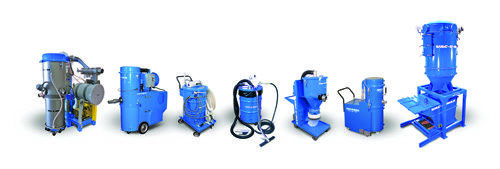Combustible dust control
How will an industrial vacuum cleaner enhance safety and compliance?

Responding is David Kennedy, business development manager, VAC-U-MAX, Belleville, NJ.
Industrial vacuum cleaners address many types of exposure risks by eliminating dust clouds, dissipating static electricity and removing the need for shoveling or sweeping. OSHA defines combustible dust as “fine particles that present an explosion hazard when suspended in air in certain conditions.” Combustible dust is everywhere and requires special collection and control.
Blowing combustible dust accumulations with a compressed air line and not using electrical equipment designed for hazardous areas are among the top violations cited by OSHA. As a result, facility and safety managers have added compressed-air-operated industrial vacuum cleaners approved for use in Class I and Class II, Division 2 areas to mitigate the possibilities of secondary dust explosions. Reducing the amount of dust that is suspended in the air results in lower housekeeping costs with less time required for the task. When used regularly in housekeeping routines, industrial vacuum cleaners minimize the amount of dust that can collect in hard-to-reach areas. Compliance to regulations and housekeeping standards aligns with corporate goals, including employee health and safety.
When most people think of vacuum cleaners for an industrial setting, they often think of shop-type vacuums they have in their garage. Because 90% of the materials vacuumed are combustible dust, shop-type vacuums aren’t suitable because open carbon brush motors can be an ignition source. Sometimes facilities have used those types of vacuum cleaners and found that they not only create sparking hazards but are ineffective at sucking up fine dust particles or heavy materials, and often create their own dust clouds when operating. Shop-type vacuum cleaners are no comparison to industrial vacuum cleaners, which have three times the suction power and are the safest to operate. Air-operated industrial vacuum cleaners don’t contain electric motors that burn out or have moving parts that wear out, increasing costs in the long run. Air-operated vacuum cleaners for combustible dust are safe in terms of grounding, reducing the amount of combustible dust suspended in the air and mitigating the possibility for dust explosions, while providing a better respiratory environment for workers.
Broom sweeping or blowing fugitive dust during housekeeping is discouraged by OSHA and the National Fire Protection Association. Seemingly benign, dust creates an assortment of hazards that include airborne particles that can lead to eye injuries, slip hazards and ergonomic injuries. The most serious risks surrounding the sweeping and blowing of dust are respiratory and explosion hazards. The use of industrial vacuum cleaners is the first-line method to remove dust. Rather than redistributing dust, industrial vacuum cleaners remove dust, eliminating potential hazards.
The most serious hazard associated with dust is the risk of a secondary explosion, which captured the attention of Congress and led to legislation that directed OSHA to “issue an interim combustible dust rule and an amendment to the Hazard Communication Standard in 90 days, and a final rule in 18 months,” according to an OSHA advance notice of proposed rulemaking on combustible dust. With more than 5,000 violations associated with OSHA’s Combustible Dust National Emphasis Program, recent news releases about the agency levying fines on several companies and increases in local TV coverage on combustible dust violations, it should be clear that OSHA is serious about enforcing current standards.
Industrial vacuum cleaning solutions for combustible dust are available to fit all budgets and facility sizes. They range in size from portable vacuums in the 5- to 55-gallon size, through portable vacuum loaders that can clean up to 5 tons an hour, through central vacuum systems with piping networks for multiple operators. Industrial vacuum cleaners quickly bring facilities into compliance not only for explosion hazards but for other dust- and debris-related housekeeping issues that pose respiratory, slip and ergonomic hazards. Working with an industrial vacuum cleaner manufacturer with application and chemical interaction experience produces the best outcome.
Editor's note: This article represents the independent views of the author and should not be construed as a National Safety Council endorsement.
Post a comment to this article
Safety+Health welcomes comments that promote respectful dialogue. Please stay on topic. Comments that contain personal attacks, profanity or abusive language – or those aggressively promoting products or services – will be removed. We reserve the right to determine which comments violate our comment policy. (Anonymous comments are welcome; merely skip the “name” field in the comment box. An email address is required but will not be included with your comment.)

